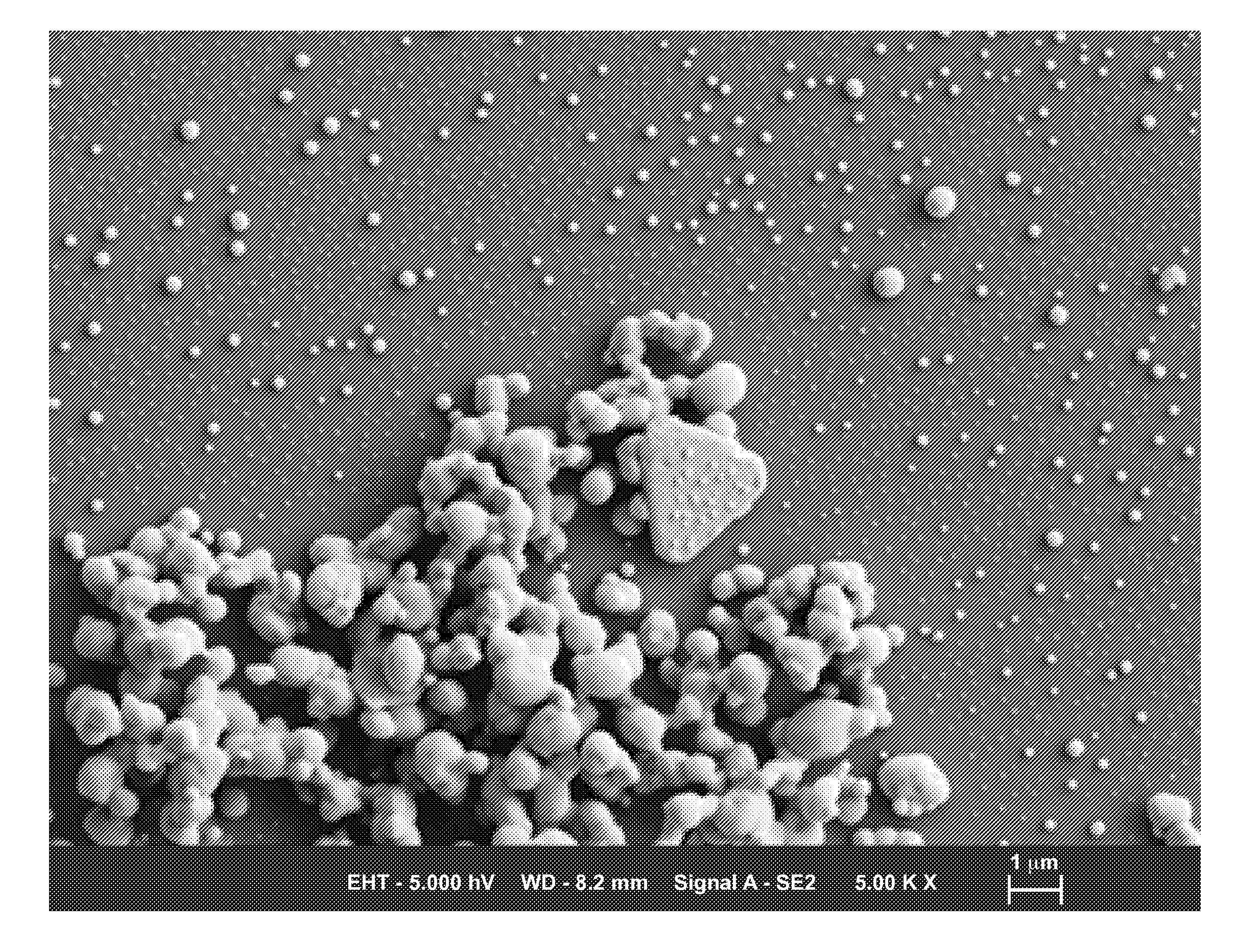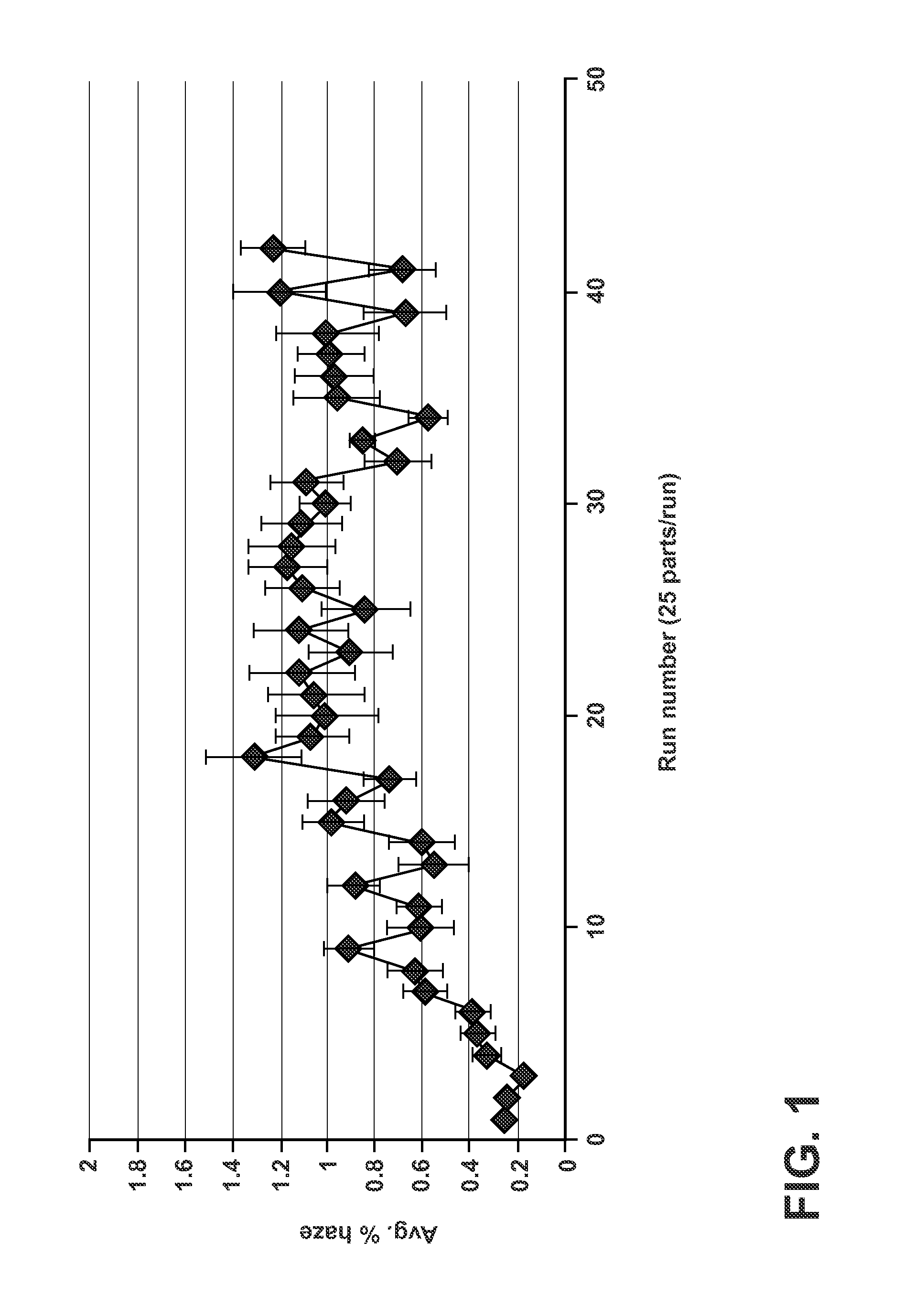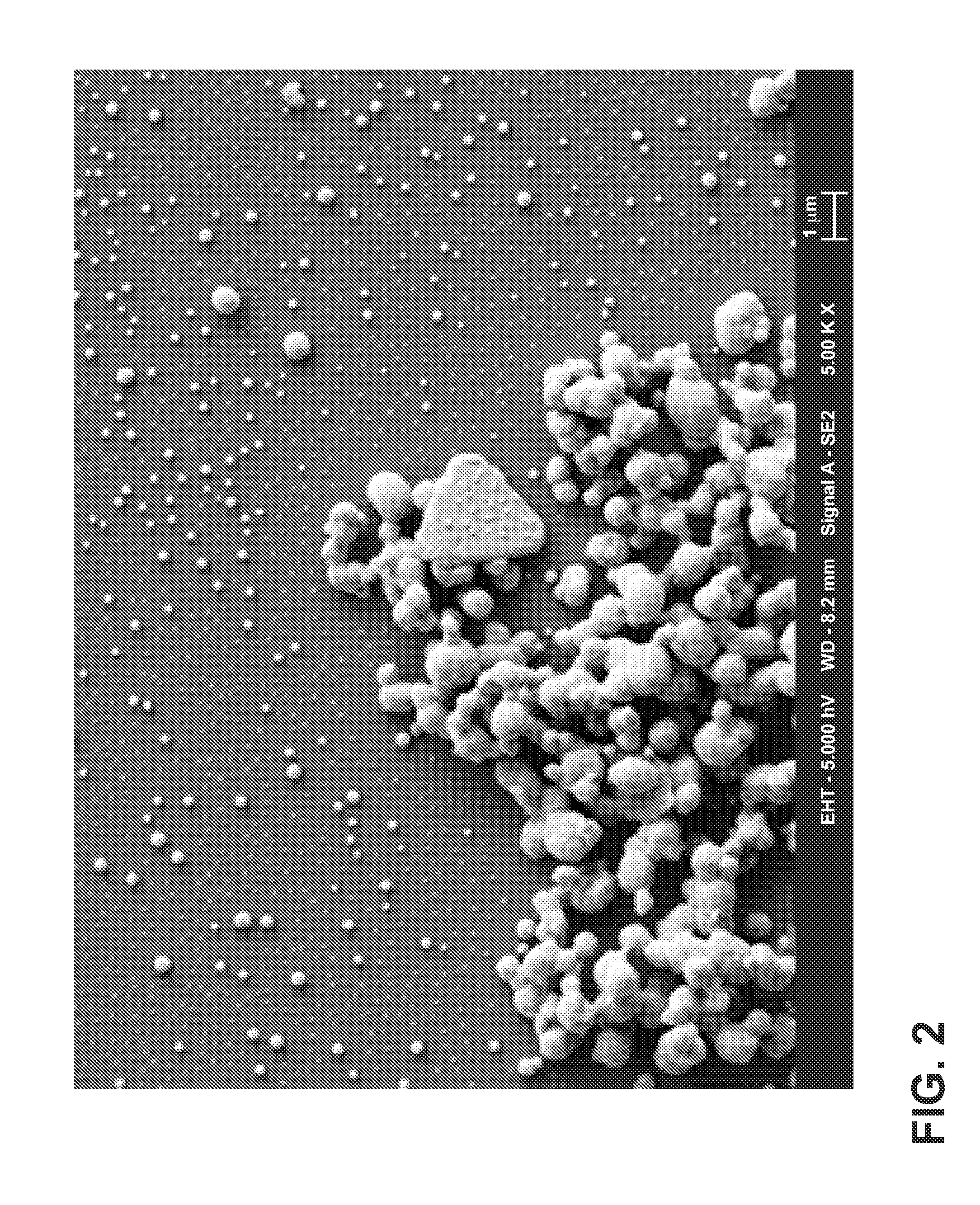Antimicrobial glass articles and methods of making and using same
a technology of glass articles and glass pieces, applied in the field of antimicrobial glass articles, can solve the problems of glass articles becoming unsuitable for the intended purpose, glass articles becoming unsightly, and difficult to make, and achieve the effect of no discoloration
- Summary
- Abstract
- Description
- Claims
- Application Information
AI Technical Summary
Benefits of technology
Problems solved by technology
Method used
Image
Examples
example 1
[0104]Comparative Examples 1A-1C, Examples 2A-2D, 3A-3E and Comparative Example 4A were prepared by providing glass substrates with the nominal composition of about 57.50 mol % SiO2, about 16.48 mol % Al2O3, 16.71 mol % Na2O, 2.79 mol % MgO, about 0.05 mol % SnO2, and about 6.46 mol % P2O5. The glass substrates had dimensions of 1″×1″×0.5 mm and were first immersed in a first ion exchange bath including KNO3 molten salt at a temperature of about 390° C. for 2.5 hours each to provide strengthened glass substrates. The strengthened glass substrates were then immersed in a second ion exchange bath including either 0.25 wt % AgNO3 or 0.5 wt % AgNO3, along with a balance of KNO3. All of the strengthened glass substrates were immersed in the second bath for the same period of time and temperature to form antimicrobial glass articles, at 390° C. for 1 hour. Thereafter, the antimicrobial glass articles were subjected to one of the cleaning conditions listed in Table 2. The phrase “dilute cl...
PUM
| Property | Measurement | Unit |
|---|---|---|
| Temperature | aaaaa | aaaaa |
| Temperature | aaaaa | aaaaa |
| Time | aaaaa | aaaaa |
Abstract
Description
Claims
Application Information
 Login to View More
Login to View More - R&D
- Intellectual Property
- Life Sciences
- Materials
- Tech Scout
- Unparalleled Data Quality
- Higher Quality Content
- 60% Fewer Hallucinations
Browse by: Latest US Patents, China's latest patents, Technical Efficacy Thesaurus, Application Domain, Technology Topic, Popular Technical Reports.
© 2025 PatSnap. All rights reserved.Legal|Privacy policy|Modern Slavery Act Transparency Statement|Sitemap|About US| Contact US: help@patsnap.com



